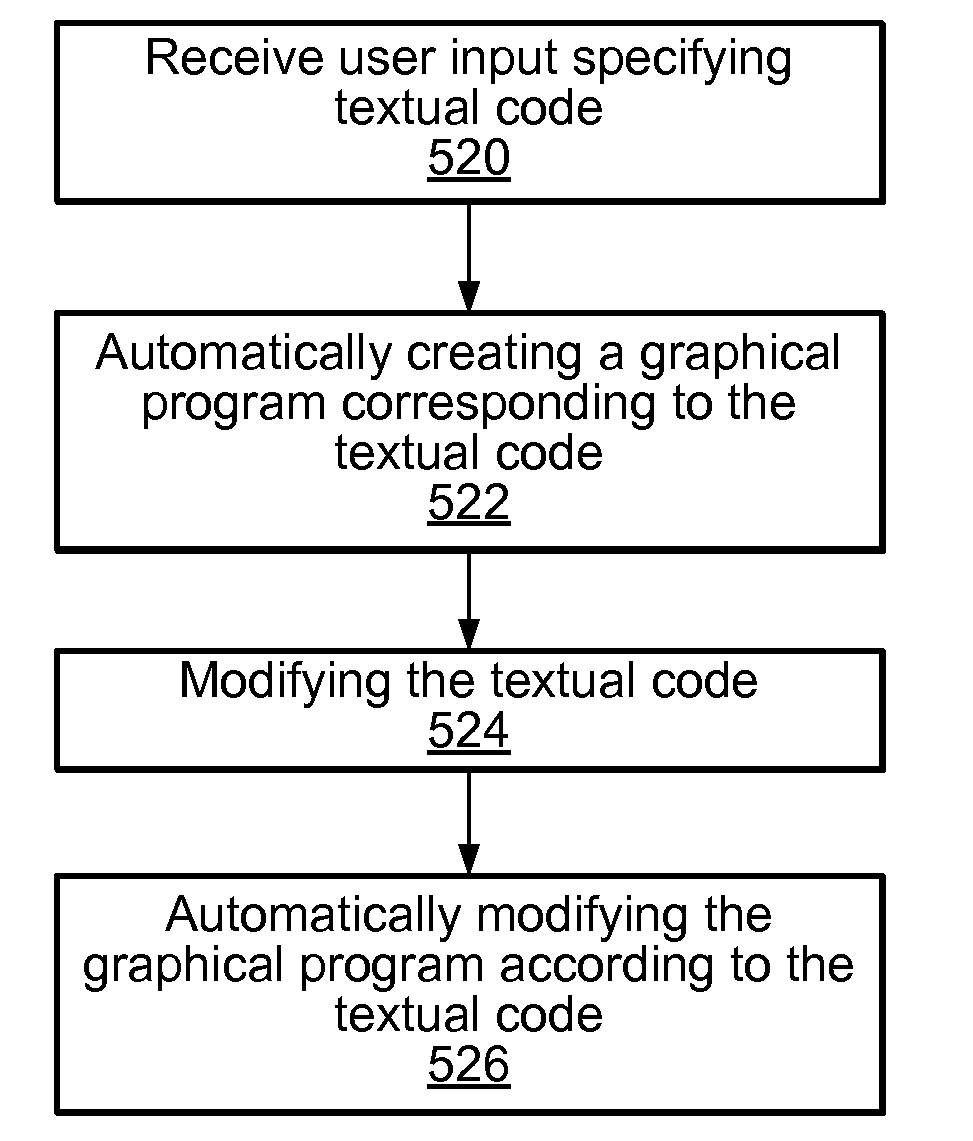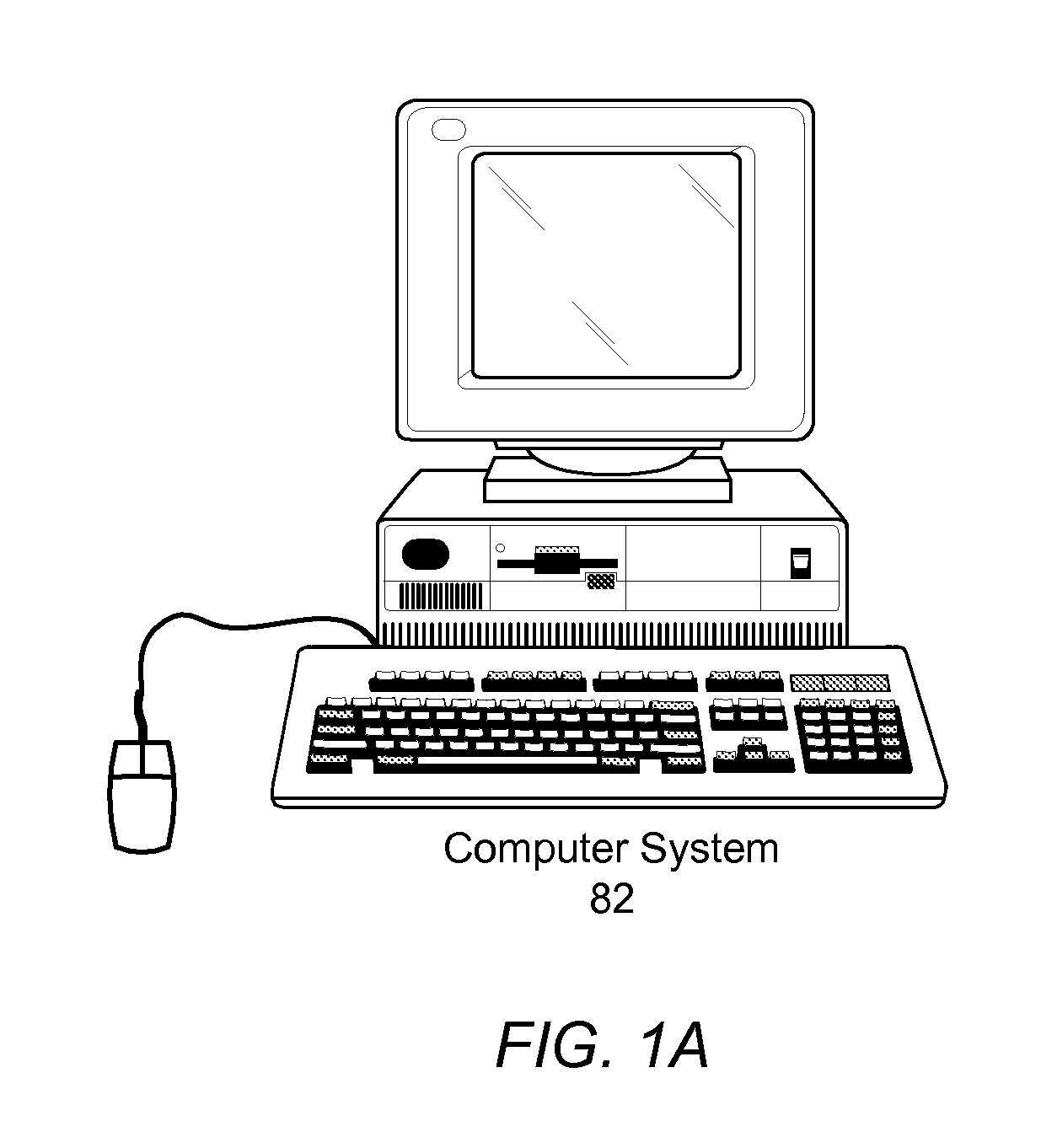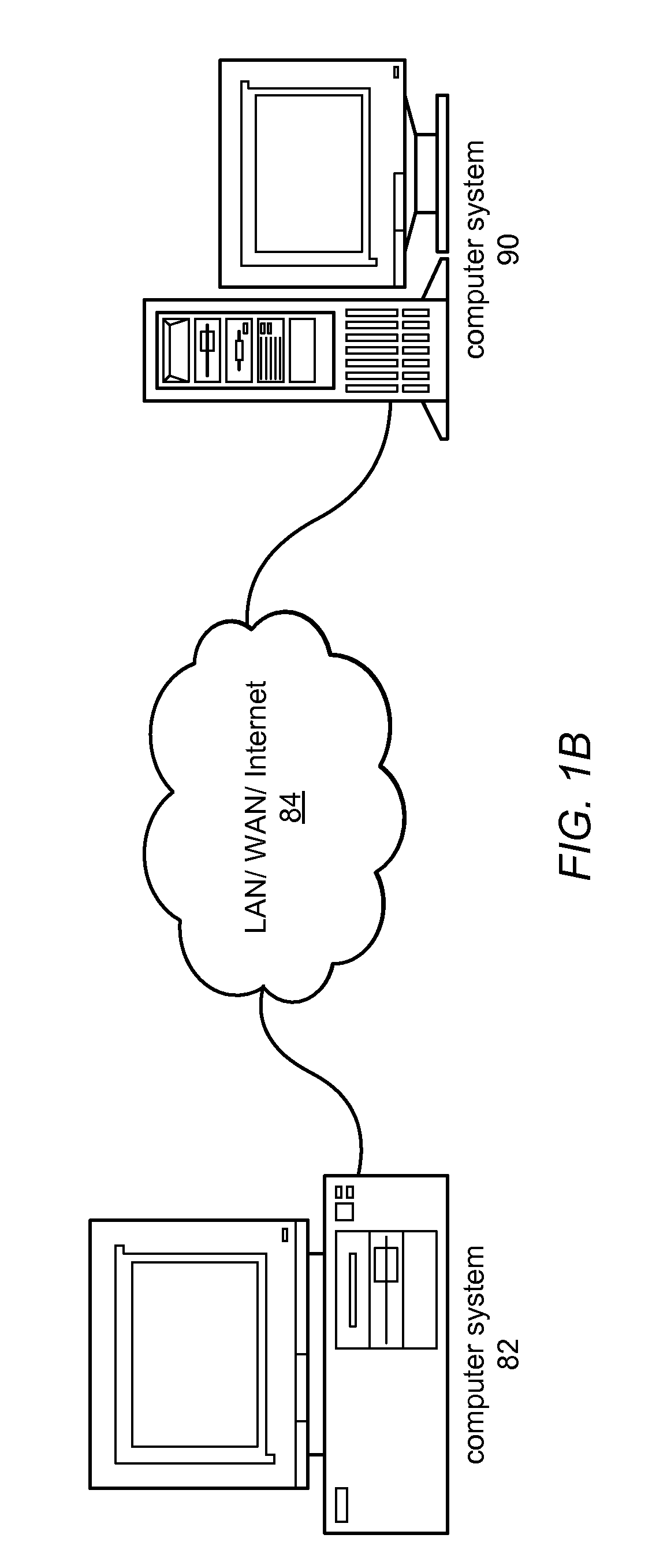Automatic Conversion of Text-Based Code Having Function Overloading and Dynamic Types into a Graphical Program for Compiled Execution
a technology of dynamic types and text-based code, applied in the field of graphical programming, to achieve the effect of better visual representation of the operation
- Summary
- Abstract
- Description
- Claims
- Application Information
AI Technical Summary
Benefits of technology
Problems solved by technology
Method used
Image
Examples
Embodiment Construction
Incorporation by Reference
[0037]The following references are hereby incorporated by reference in their entirety as though fully and completely set forth herein.
[0038]U.S. Pat. No. 5,481,741 titled “Method and Apparatus for Providing Attribute Nodes in a Graphical Data Flow Environment,” issued on Jan. 2, 1996.
[0039]U.S. Pat. No. 6,102,965 titled “System and Method for Providing Client / Server Access to Graphical Programs,” issued on Aug. 15, 2000.
[0040]U.S. Pat. No. 6,437,805 titled “System and Method for Accessing Object Capabilities in a Graphical Program” filed Aug. 18, 1998.
[0041]U.S. Patent Application Publication No. 20010020291 (Ser. No. 09 / 745,023) titled “System and Method for Programmatically Generating a Graphical Program in Response to Program Information,” filed Dec. 20, 2000.
[0042]U.S. Pat. No. 6,173,438 titled “Embedded Graphical Programming System” filed on Aug. 18, 1997, whose inventors were Jeffrey L. Kodosky, Darshan Shah, Samson DeKey, and Steve Rogers.
[0043]U.S. ...
PUM
 Login to View More
Login to View More Abstract
Description
Claims
Application Information
 Login to View More
Login to View More - R&D
- Intellectual Property
- Life Sciences
- Materials
- Tech Scout
- Unparalleled Data Quality
- Higher Quality Content
- 60% Fewer Hallucinations
Browse by: Latest US Patents, China's latest patents, Technical Efficacy Thesaurus, Application Domain, Technology Topic, Popular Technical Reports.
© 2025 PatSnap. All rights reserved.Legal|Privacy policy|Modern Slavery Act Transparency Statement|Sitemap|About US| Contact US: help@patsnap.com



